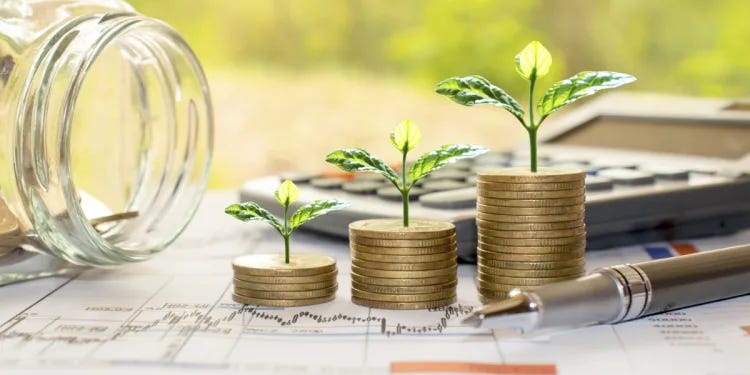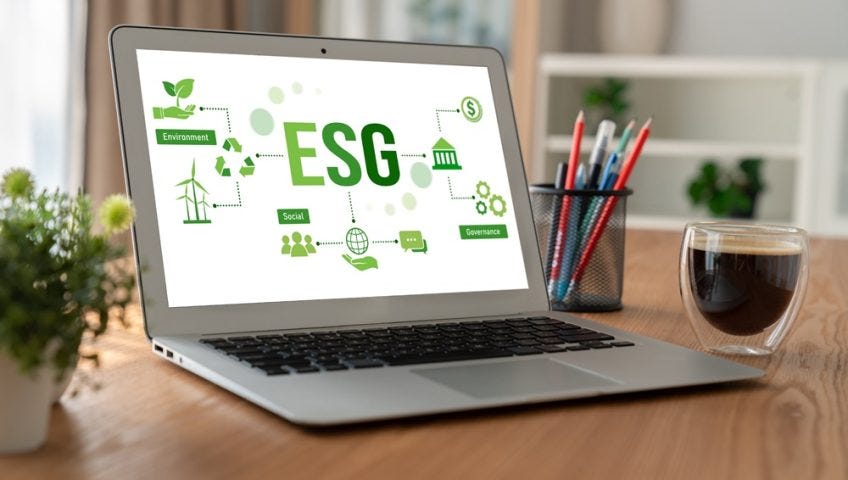The Case for Sustainability Reporting
Why we feel it is important for small organizations to report on their sustainability efforts
At Brightest, our mission has always been to help organizations build a more sustainable, responsible, and inclusive future. This year, we took an important step toward living our values by publishing our very first sustainability report.
For us, this wasn’t just a box to check; it was a foundational step in demonstrating accountability, transparency, and progress in our environmental, social, and governance (ESG) initiatives. Sustainability reporting can seem like a major challenge, especially for small to mid-sized enterprises (SMEs) that may not have the same resources as larger corporations. But crafting and publishing a sustainability report is not only possible for smaller organizations, it's also incredibly valuable.
This week, we’re sharing why sustainability reporting is important for SMEs, along with guidance, practical steps, and tips to help you create your own impactful report.
“As a small organization, this inaugural sustainability report not only outlines our progress, but also serves as a platform for future growth and deeper engagement with our clients, partners, and communities. Most importantly, and contrary to certain false public narratives, we want to show that sustainability reporting isn’t a burden for startups and small businesses — it’s an opportunity.”
- Chris Bolman, Co-Founder & CEO of Brightest
Why Sustainability Reporting Matters for Small Organizations
For SMEs, sustainability reporting might feel like a task best left to large corporations with entire departments dedicated to ESG. However, research and real-world experience consistently show that small businesses can make a big impact. After all, SMEs account for 90% of all businesses1. And, even for small organizations, documenting your sustainability efforts can bring substantial and clear benefits.
Publishing a sustainability report enhances organizational reputation and credibility at a time when stakeholders are increasingly attuned to environmental and social responsibility.
Reports are also powerful engagement tools. They invite conversation, feedback, and collaboration from employees, customers, vendors, the community, and other stakeholders, and can serve as a rallying point to align your internal teams around shared goals and values.
From a talent perspective, sustainability reporting strengthens your ability to attract and retain talented individuals. Today’s workforce, especially Millennials and Gen Z, wants to work for purpose-driven companies. Documenting your ESG journey shows potential hires that your company is a force for good and cares about more than just profits.
The reporting process itself offers internal benefits as well. Taking the time to carefully assess your operations can help uncover both strengths and areas for improvement. A report can also be a useful tool to highlight potential risks and emerging opportunities in an evolving business landscape.
Furthermore, aligning your organization with local and global frameworks, such as the UN Sustainable Development Goals (SDGs) or regional ESG standards, demonstrates alignment with a broader movement for positive change.
How to Create a Sustainability Report: A Step-by-Step Guide
Sold on the importance of sustainability reporting yet? If you're ready to begin your organization’s reporting journey, here’s a practical and achievable process that even resource-constrained teams can follow:
Research relevant standards and frameworks. Start by reviewing established sustainability reporting standards like GRI, SASB, B Corp, or your industry-specific frameworks. These will help you understand what to include, how to structure your report, and how to communicate impact effectively.
Conduct a materiality assessment. Identify the ESG topics that are most relevant to your organization and its stakeholders. Consider both your internal operations and external impact. Focus on the issues that matter most to your business and audience.
Collect data from multiple sources. Gather information across different departments and stakeholder groups. This may include employee surveys, utility data, vendor assessments, and community engagement metrics. Don’t overlook qualitative feedback, which can offer valuable insights and add depth to your report.
Perform a sustainability audit. Evaluate current practices and identify areas for improvement. A basic internal review can help you determine where your efforts are strongest, where you may be falling short, and where you can make a real difference.
Set SMART sustainability goals and develop an action plan. Based on your audit and data, set goals that are Specific, Measurable, Achievable, Relevant, and Time-bound (SMART). Don’t shoot too high; these goals should be actionable and grounded in the reality of your organization’s capacity and priorities.
Create the report. Compile your findings, progress, and goals into a clear, visually engaging document. A well-designed report is easier to read and more compelling to share. If budget allows, work with a designer or use a report template to give it a polished, professional look.
Publish and share it with stakeholders. Make your report publicly accessible—upload it to your website, include a downloadable version, and distribute it through email, social media, and other communication channels. Be sure to share it with clients, employees, vendors, and investors.
Tips for Organizations With Limited Resources
Small teams can’t always dedicate full-time resources to sustainability reporting. The good news is, there are different ways to streamline the process and make it more efficient. By taking a practical, incremental approach, you can still create a meaningful and credible report.
First, begin early and track data consistently throughout the year. Even simple spreadsheets can go a long way if updated regularly. Focus on achievable goals and be transparent about what you’re able to measure or not. You can always build and expand your reporting in future years as resources allow.
Employee engagement is another powerful tool. Encourage team members to contribute their ideas, help with data collection, or take ownership of specific ESG initiatives. You can also collaborate with your suppliers and vendors to access sustainability information across your value chain.
If budget allows, consider investing in sustainability software or platforms that can streamline data collection, goal tracking, and report generation. These tools can save you time and improve data quality over the long term.
After Publishing: Establishing a Sustainable Reporting Cycle
Publishing your first sustainability report is an achievement worth celebrating. But the journey doesn’t end there. To maximize the value of your work, you’ll want to establish a schedule and plan for ongoing reporting.
Commit to publishing your report annually, ideally at the same time each year. This helps set expectations for your stakeholders and creates a useful progress report for your team. Future reports should include updates on your goals, progress you’ve made, and any changes to your strategy.
Just as important, you should have an implementation plan to act on the key findings in your report. Reporting shouldn’t be a passive exercise; it should lead to real change, accountability, and improvement. As you build a history of reporting, you’ll gain greater insight into what’s working, how you’re growing, and where your next big opportunities lie.
Final Thoughts
At Brightest, publishing our first sustainability report was a defining moment. It allowed us to reflect on our progress, identify where we can do better, and reinforce our commitment to transparency and accountability. More importantly, it enabled us to “walk our talk” and lead by example.
“It's essential for a company like ours to lead by example by being fully transparent about our own environmental and social impact. This is just our first report, and we're already excited to launch new initiatives in 2025 to further improve our ESG performance and have a positive impact on both people and the planet.”- Nina Benoit, Director of Sustainability at Brightest
We hope our experience can inspire and empower other small and mid-sized organizations to begin their own sustainability reporting journey. You don’t need perfection. You need purpose, commitment, and a willingness to learn and grow.
Sustainability reporting isn’t just for big corporations, it’s for any organization that wants to make a difference. And in today’s world, every effort counts.
Want to view Brightest’s 2024 Sustainability Report? Check it out here.
This Week in Sustainability is a weekly email from Brightest (and friends) about sustainability and climate strategy. If you’ve enjoyed this piece, please consider forwarding it to a friend or teammate. If you’re reading it for the first time, we hope you enjoyed it enough to consider subscribing. If we can be helpful to you or your organization’s sustainability journey, please be in touch.












